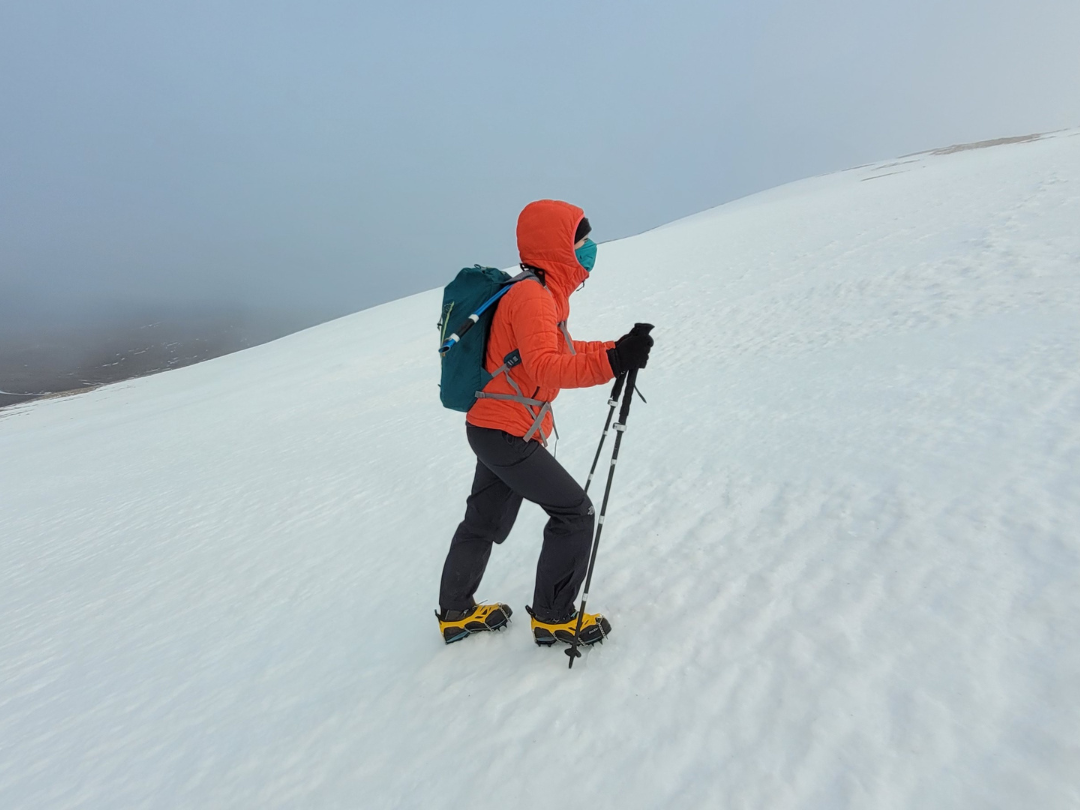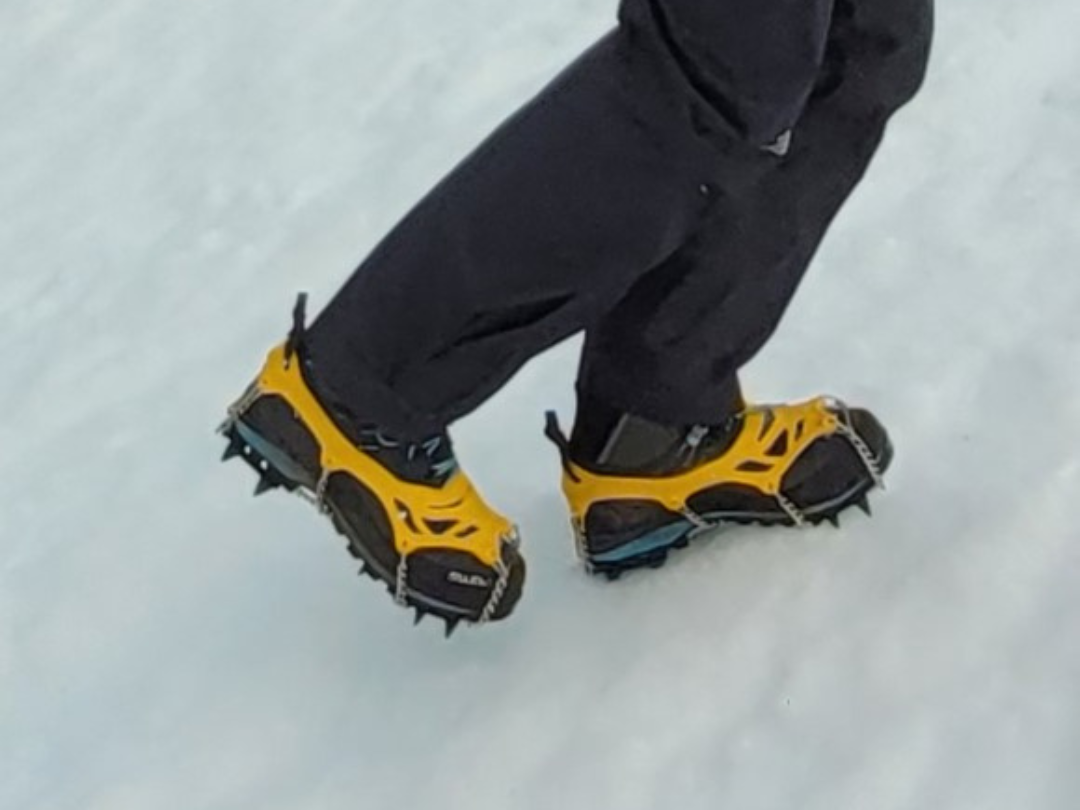Monday 30th December 2024, 8:32am
Every internet discussion has the effect of polarising opinion, and the use of microspikes in the mountains is no exception. You would be forgiven for thinking that they are either the spawn of the devil or the best thing since sliced bread!
As our members know, Mountaineering Scotland isn’t afraid of a controversial topic and a good Survey Monkey (navigating with mobile phones and the Old Man of Hoy spring to mind!). So, at the end of last winter, we asked people to let us know their thoughts on using microspikes in the winter mountains.
Winter in the Scottish mountains can be both breathtakingly beautiful and incredibly challenging. The rugged terrain, combined with unpredictable weather, makes it essential for those going out to be appropriately equipped, which also includes having the “right” gear on their feet. But what is “right”? And what factors should you consider when deciding?
Traditionally this “right kit” has been an ice axe, with crampons that fit a rigid boot. Crampons remain the most suitable thing to strap to your boots when winter mountaineering or winter climbing. So, why the growth in popularity of microspikes? And what situations can they be used safely in?

Microspikes are a type of traction device which you can attach to your footwear to provide better grip on icy and compacted snow. They consist of small spikes, usually made of stainless steel, connected by chains or flexible bands that fit over your boots or trainers. They are much lighter than crampons, and much cheaper. They are also easier to walk in, requiring minimal to no training, and can be used on almost any type of footwear, not just stiff winter boots.
Although they aren’t suitable for many locations and conditions in the Scottish mountains during winter, they can be used safely in the right situations. The key is to understand when to use them, as well as being aware of their limitations – go beyond them in consequential terrain and it’s not going to end well.
With microspikes being lightweight and easy to put on and off, they’re great for those occasions where you are exploring well defined paths and tracks, particularly when covered in that type of awkward, compacted snow, or a thin layer of ice. In these situations, traditional crampons can be awkward (and sometimes, more hazardous) to walk in, while microspikes can give enough traction to walk safely and reduce the chance of slipping.
Below are some things to be aware of if considering using microspikes:
Traction – they don’t penetrate the snow and ice as deeply as crampons. Therefore, they are more likely to lose traction/fail at much lower slope angles especially if on icy snow or ice.
Slipping off – most designs are only held in place on the footwear by stretchy rubber. As the angle you walk on increases, this flexes the footwear more and pulls the microspikes across the footwear resulting in it slipping off and sliding down the icy slope, probably with you soon afterwards!
Footprint – microspikes have small spikes under a much smaller area of the foot, which don’t usually come to the edge of the sole. A crampon has large spikes around the circumference of the footwear. Microspikes therefore don’t provide traction when only the edge or toe area is used.

Microspikes can lose traction on steep terrain
Knowing microspikes provide less traction and are more susceptible to falling off, it is important to consider the consequences of you falling over in the place you choose to use them. If you’re in gentle rolling terrain, or on a well-defined path away from steep slopes, then a fall will probably only result in a bruised limb or two and a cracked ego. However, the consequences of falling in steeper ground, or a slope that leads to an edge, could be – and for some, has been – fatal.
If in doubt, take crampons.
Thank you to the 1,300+ people who took the time to respond to the microspikes and crampons survey. We appreciate all of the thoughtful, measured and appropriate comments/answers.
The Mountain Safety Group is now putting together some helpful guidance, which will be shared online as well as in stores, to help people make better informed decisions on how to choose what to wear in winter.